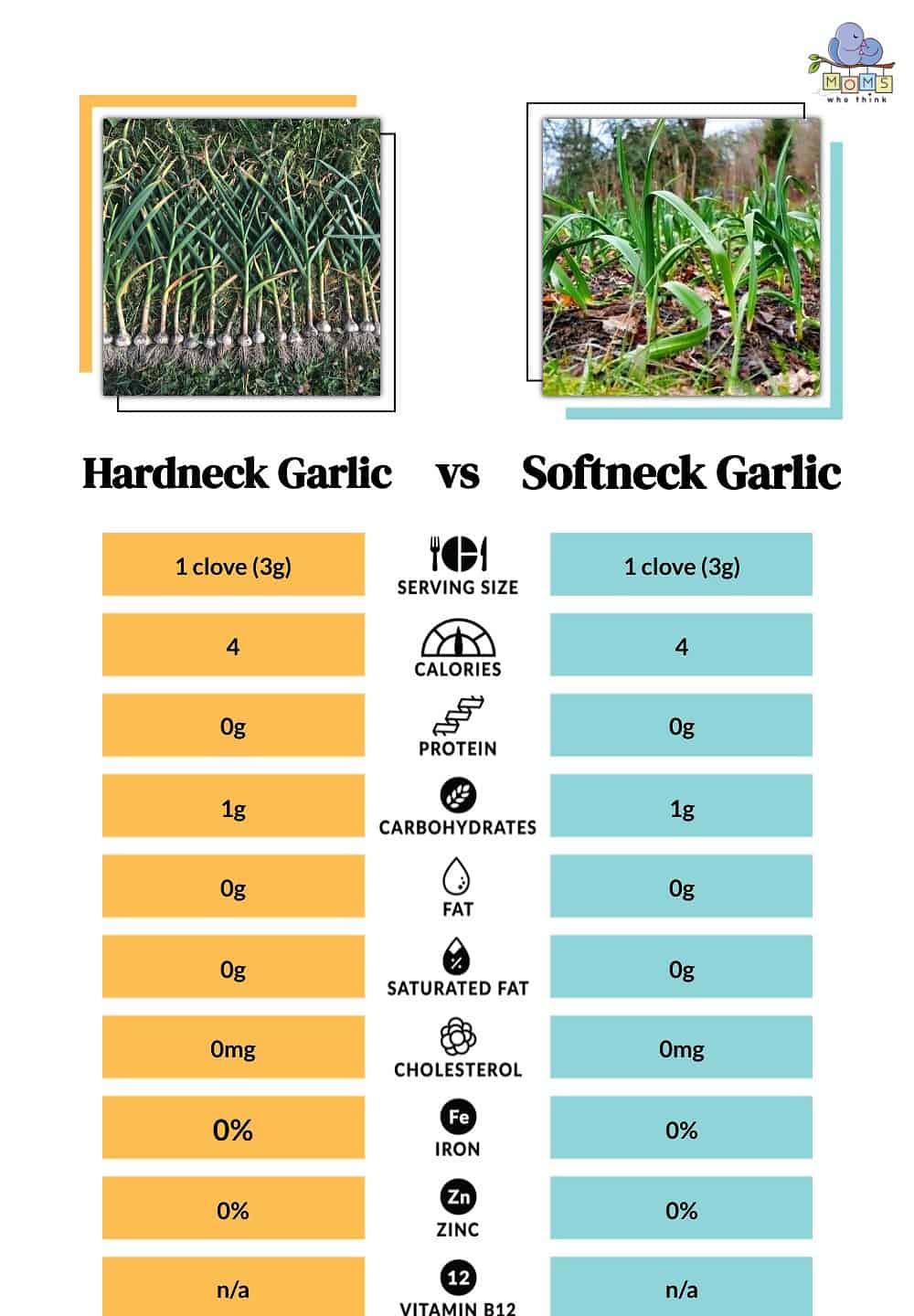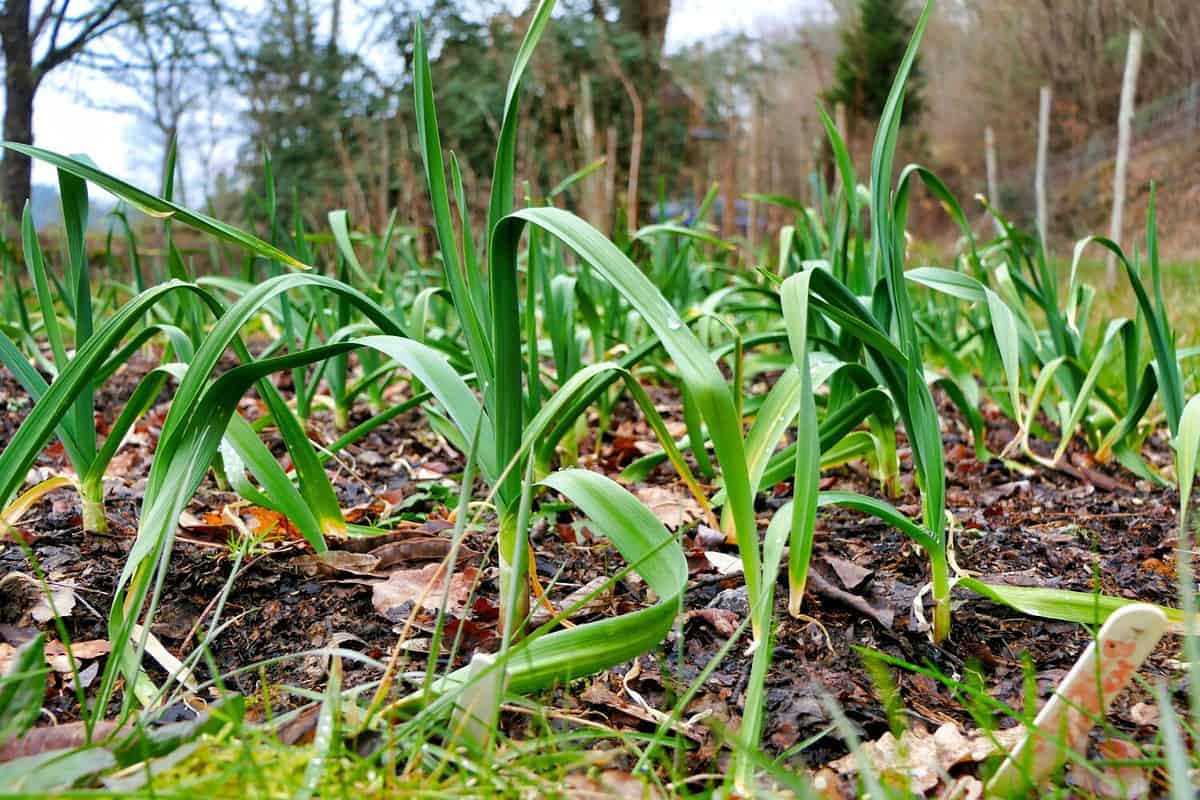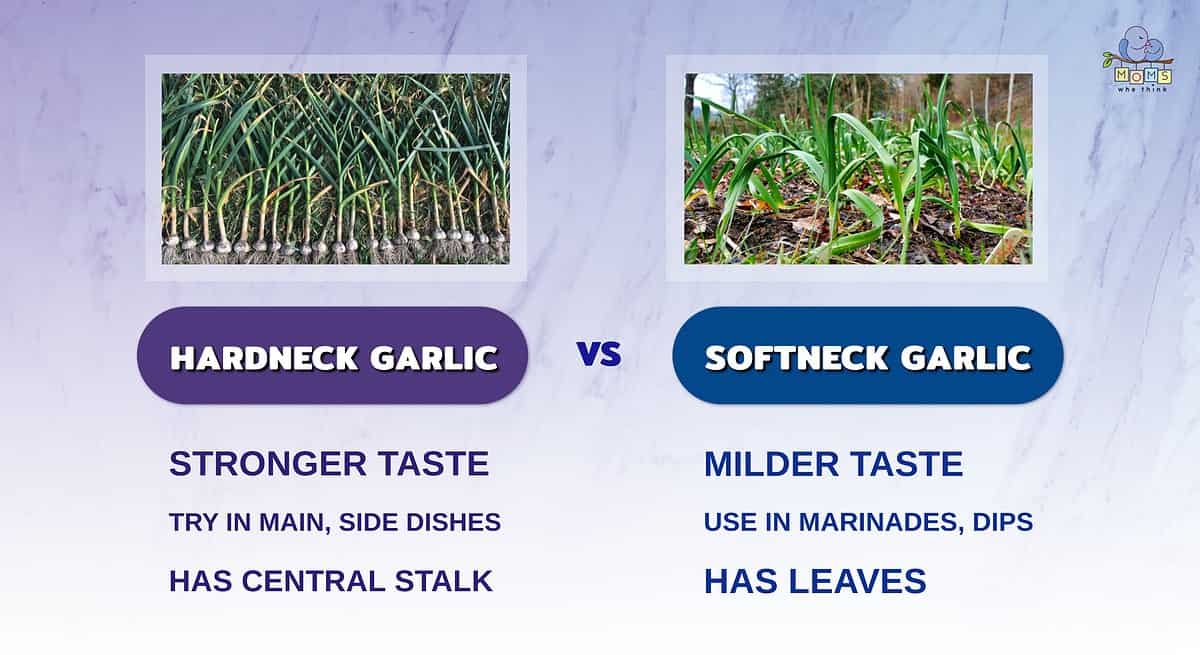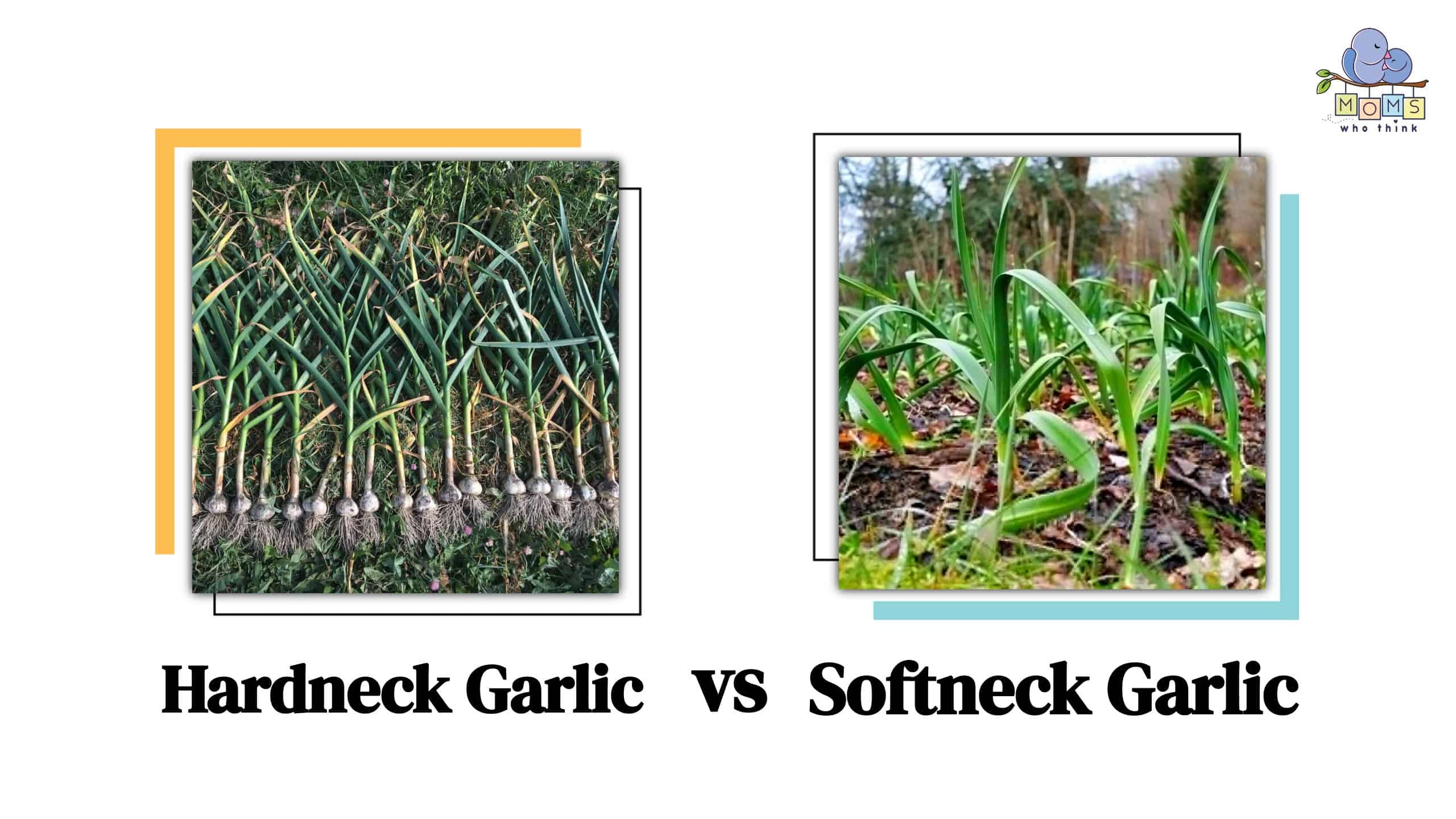If you have strolled through the farmer's market, you may have seen freshly harvested garlic in various forms. There are wide varieties of garlic, which all fall into one of these two categories: hardneck or softneck. When it comes to hardneck garlic vs. softneck garlic, the main difference is in how they grow, flavor intensity, and the size of the garlic bulb.
What is Garlic?
Garlic is in the Allium family, along with shallots, leeks, and onions. It has a strong, pungent aroma and has been used in cooking for the last 5,000 years. Across the world, cooks use garlic to add flavor to recipes. Historically, garlic was used medicinally as well. People of the past used garlic as an antibiotic and blood cleaner, and during the Plague, garlic was hung in ropes around the home to keep the air clean.
Nowadays, garlic is the star of many dishes. Garlic pairs well with meats, soups, rice, and vegetables. According to Healthline, the folks from the Middle Ages were on to something, and garlic does have health benefits like lowering cholesterol, protecting the heart, and boosting the immune system. And if used topically, garlic can help clear up acne and treat foot fungus like athlete’s foot.
What is Hardneck Garlic?
Hardneck garlic has a central stalk, and the bulbs are formed around the rigid stalk. This type of garlic forms long green, flowering stalks with a mild garlicky or peppery flavor. The stalks are called garlic scapes, and you can find them in farmer's markets during certain times of the year. Many chefs consider garlic scapes a delicacy. Hardneck garlic produces one bulb with five to eight cloves, depending on the variety. Hardneck garlic is heartier than softneck and grows in colder climates. When growing hardneck garlic, removing the scapes helps the plant focus on growing bigger cloves. Harvested hardneck garlic has a shelf life of four to six months.
What is Softneck Garlic?
Softneck garlic has leaves rather than a stalk and grows many cloves per bulb, anywhere from twenty to thirty different-sized cloves. Softneck garlic grows well in a warmer climate and matures faster than hardneck. Once harvested, the bulbs can last between nine and twelve months. This type of garlic has a milder taste with an earthy flavor.
Nutritional Differences

©
Hardneck and softneck garlic have the same nutritional profile. However, due to its more subtle flavor, a recipe may require more cloves of softneck to reach the same flavor intensity as hardneck garlic.
Best Culinary Uses for Hardneck Garlic
Hardneck garlic has a stronger taste than softneck varieties and is best used in dishes that can showcase the garlic flavor. Dishes like garlic bread, mashed potatoes, chicken, steak, garlic butter, and pizza. The large bulbs are excellent for roasting in the oven drizzled in olive oil. Roasted garlic has a strong scent and buttery texture, perfect in dips like hummus and pesto. Or just spread some on toast or a cracker for a tasty garlicky bite.
Best Culinary Uses for Softneck Garlic
Softneck garlic has a less intense taste and works well in an ensemble of flavors. Things like soups and stews are better with a clove or two of this garlic. The mild flavor adds another dimension to the dish without overpowering all other ingredients. If you use raw garlic in marinades, salad dressings, or dips, then softneck is the better choice. It has a garlic flavor without the intensity, so adding raw softneck garlic is a great way to keep the flavor but still keep the dish mild for those with sensitive palates.
Best Way to Treat Garlic Breath
Garlic lovers everywhere know that the unfortunate side effect of enjoying garlic is garlic breath. While it's impossible to avoid completely, a few things can help with garlic breath. First and foremost, brush your teeth and use mouthwash after enjoying a garlic-heavy meal. Then, drink water. Water can help flush out the system and wash out some lingering smells. Sipping green tea can help neutralize the odor, too.
How to Grow Garlic

©Stephen Farhall/Shutterstock.com
The best time to plant garlic is in October. Both hardneck and softneck garlic are planted with the same technique. Open the garlic bulb and remove the largest cloves for planting. Do not remove the papery peel. Plant the cloves with the pointy side up in three inches of soil. It is best to plant garlic six inches apart so the plants have room to develop after planting. Cover plants with a mulch of straw or leaves. The mulch ensures the plants have enough moisture and protects the plants. By July, the plants should start to turn yellow; when at least half the plant is yellow, it is time to harvest. The plants must be cured in a dry, well-ventilated space for two weeks. Once the plants have dried, you can cut the stalks or braid them to hang around the house and use them as needed.
Comparison of Hardneck vs. Softneck Garlic

It may be surprising to hear that there are different types of garlic. While there are quite a few similarities between hardneck and softneck garlic, including their nearly identical nutritional profile, there are also some subtle differences. Let's take a look at what those are:
- When looking at their characteristics, hardneck garlic tends to have a central stock, whereas softneck garlic has leaves.
- Hardneck garlic has a stronger taste than softneck garlic, making it great in dishes that showcase this flavor.
- Softneck garlic grows well in warmer climates, while hardneck garlic thrives in colder climates.
Many recipes call for garlic. If you're in search of a new one to add to your repertoire, take a look at this:
PrintChicken with Garlic Sauce
- Yield: 4 servings 1x
Ingredients
3 Tablespoons all-purpose flour, divided
1½ teaspoons minced fresh rosemary or 4 teaspoons dried rosemary, crushed
1½ teaspoons rubbed sage
¾ teaspoon salt
½ teaspoon pepper
4 boneless skinless chicken breast halves (1½ pounds)
2 Tablespoons olive oil, divided
7 garlic cloves, halved lengthwise
½ cup chopped onion
¼ teaspoon crushed red pepper flakes
¼ cup white wine or reduced sodium chicken broth
1¼ cups reduced sodium chicken broth
1 Tablespoon butter, melted
3 Tablespoons minced fresh parsley
Instructions
1. In a large resealable plastic bag, combine 2 Tablespoons flour, rosemary, sage, salt and pepper; add chicken.
2. Seal bag and shake to coat.
3. In a large nonstick frying pan, brown chicken in 1 Tablespoon oil over medium heat for 4 minutes on each side.
4. Transfer to an 8 inch square baking dish coated with cooking spray.
5. Bake, uncovered, at 325°F for 15 minutes.
6. While the chicken is baking, sauté the garlic, onion and red pepper flakes in remaining oil until onion is tender and garlic begins to brown, about 3 minutes.
7. Stir in wine or broth; bring to a boil. Boil until wine is reduced by half, about 3 minutes.
8. Stir in chicken broth; bring to a boil. Boil until broth is reduced by half, about 7 minutes. Remove pan from the heat.
9. Whisk together butter and remaining flour; add to frying pan. Return to heat.
10. Bring to a boil; cook and stir for 2 to 3 minutes or until sauce thickens.
11. Serve sauce warm over chicken breasts. Sprinkle with parsley.
Nutrition
- Serving Size: 1 chicken breast half with ½ cup sauce
- Calories: 339
- Sodium: 774mg
- Fat: 12g
- Saturated Fat: 4g
- Carbohydrates: 12g
- Fiber: 1g
- Protein: 42g
- Cholesterol: 106mg


